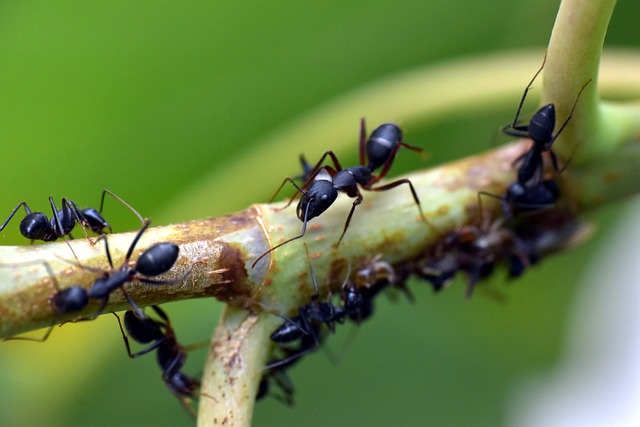To achieve effective indoor ant control, understand ant behavior, seal entry points, maintain cleanliness, and use non-toxic methods like cinnamon or boric acid baits. For homes with children and pets, prioritize safety with natural repellents; regularly inspect and clean to prevent recurring infestations.
“Keep your home ant-free with our guide to effective and safe ant extermination. Discover child- and pet-safe methods for tackling indoor ant infestations, understanding their behavior, and identifying entry points. Learn about non-toxic controls and pet-friendly techniques without compromising safety. We also offer prevention tips to stop recurring ants. Get the best indoor ant control with these practical, secure solutions.”
Understanding Indoor Ant Behavior and Entry Points
Understanding how ants behave indoors is key to effective indoor ant control. Ant colonies are highly organized, with distinct roles for each member. They work together to locate and transport food back to their nest, often entering buildings through tiny cracks and gaps in search of sustenance. Once inside, ants leave a scent trail that attracts other colony members, making it crucial to break this cycle as soon as an infestation is detected.
Identifying entry points is another critical aspect. Common access points include windowsills, doors, utility lines, and even small holes around pipes or wiring. By sealing these openings with caulk or appropriate materials, you can significantly reduce the chances of ant invasion. Regular cleaning and maintaining a clean environment also play a vital role in indoor ant control by eliminating sources of food and water that might attract them.
Non-Toxic, Child-Safe Ant Control Methods
When it comes to indoor ant control, especially in homes with children and pets, opting for non-toxic methods is paramount. Traditional pest control chemicals can be harmful if ingested or inhaled, making them unsuitable for household environments. Fortunately, there are several effective yet safe alternatives that can eliminate ants without compromising your family’s well-being. Natural repellents like cinnamon, peppermint oil, and vinegar are powerful deterrents known to ward off ants naturally.
These simple, child-safe methods involve strategically placing these ingredients in areas where ants are prevalent. For instance, sprinkling cinnamon or leaving a tray of vinegar can create an unpleasant scent barrier that discourages ant entry. Furthermore, pet-friendly insecticides derived from natural botanical extracts offer a targeted solution without leaving toxic residues. These eco-conscious options not only ensure the safety of your loved ones but also promote a healthier indoor environment.
Effective Pet-Friendly Ant Extermination Techniques
Ants can quickly invade homes, causing distress for both children and pets. However, effective pet-friendly ant extermination techniques can help maintain a comfortable living environment. One safe approach is to use natural repellents like cinnamon, lemon juice, or essential oils, which ants dislike. These can be strategically placed in areas where ants are commonly found.
Another powerful tool for indoor ant control is boric acid, a non-toxic powder that disrupts an ant’s outer shell when directly applied to them. Boric acid baits are particularly effective as they attract ants while delivering the powder, helping to eliminate entire colonies. It’s crucial to keep these products out of reach from children and pets during application and to follow all safety instructions provided by manufacturers.
Preventing Recurrent Ant Infestations
To prevent recurrent ant infestations, it’s crucial to adopt a multi-faceted approach that combines short-term extermination with long-term indoor ant control strategies. After eliminating existing ants through methods like natural repellents or professional pest control services, sealing entry points is essential. These can include cracks in walls, gaps around pipes and cables, and openings in doors or windows. Regular cleaning, especially wiping down surfaces and sweeping floors, helps remove ant trails and food residues that may attract new colonies.
Maintaining a clean environment reduces the likelihood of future infestations. Store food in airtight containers, promptly clean spills and crumbs, and regularly mop hard floors. Additionally, using natural ant repellents like lemon juice, vinegar, or peppermint oil around entry points can deter ants from returning. Regular inspections are also vital; periodically checking for ant activity allows for early detection and swift action to prevent reinfestation.
When it comes to indoor ant control, a comprehensive approach is key. By understanding ant behavior, employing non-toxic and pet-safe methods, and preventing reinfestations, you can create an environment that discourages these pests while ensuring the safety of your children and pets. Remember, proactive measures and eco-friendly solutions are the best line of defense against ants – and peace of mind is the ultimate reward.
